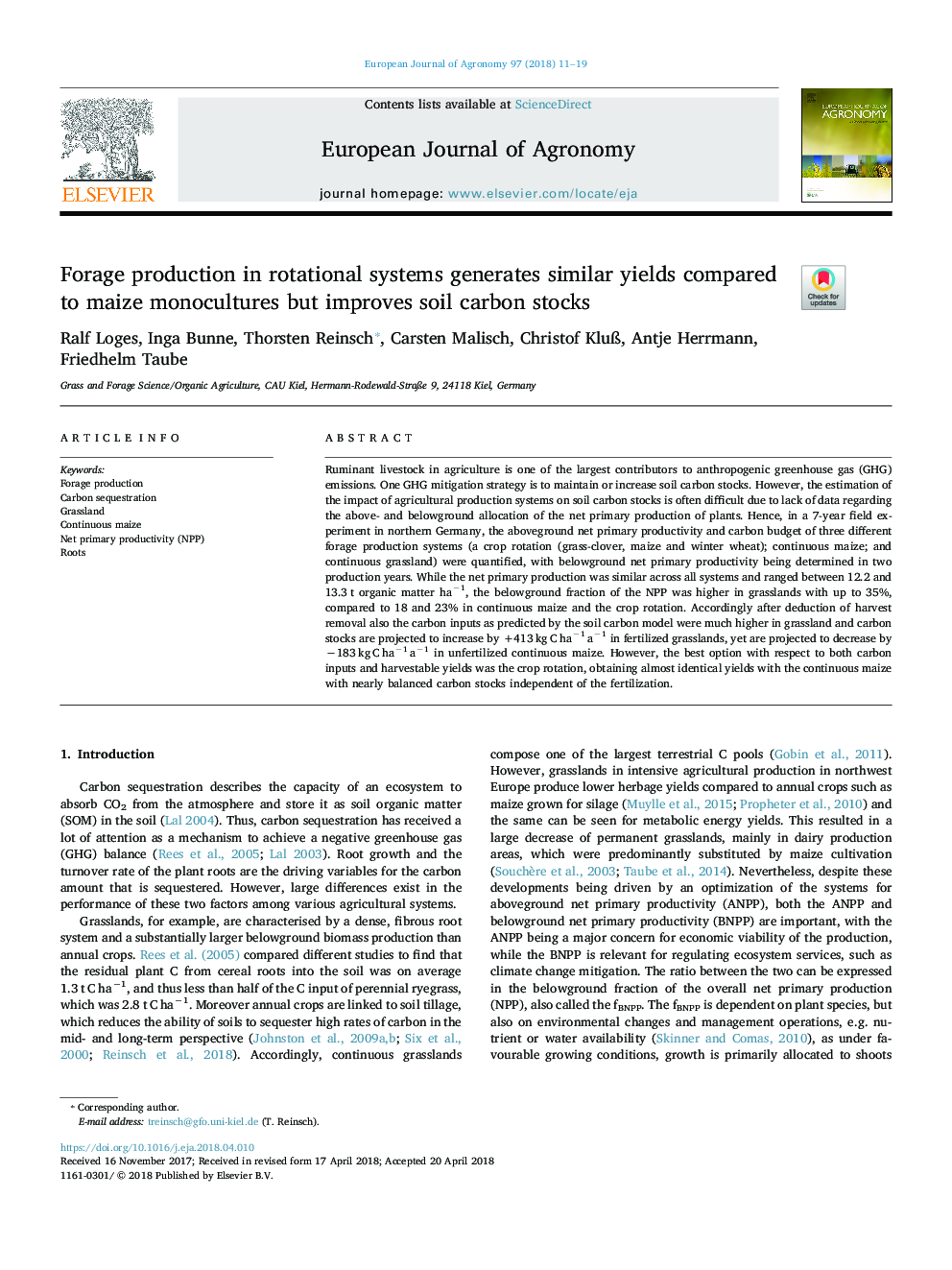| Article ID | Journal | Published Year | Pages | File Type |
|---|---|---|---|---|
| 8878877 | European Journal of Agronomy | 2018 | 9 Pages |
Abstract
Ruminant livestock in agriculture is one of the largest contributors to anthropogenic greenhouse gas (GHG) emissions. One GHG mitigation strategy is to maintain or increase soil carbon stocks. However, the estimation of the impact of agricultural production systems on soil carbon stocks is often difficult due to lack of data regarding the above- and belowground allocation of the net primary production of plants. Hence, in a 7-year field experiment in northern Germany, the aboveground net primary productivity and carbon budget of three different forage production systems (a crop rotation (grass-clover, maize and winter wheat); continuous maize; and continuous grassland) were quantified, with belowground net primary productivity being determined in two production years. While the net primary production was similar across all systems and ranged between 12.2 and 13.3â¯t organic matter haâ1, the belowground fraction of the NPP was higher in grasslands with up to 35%, compared to 18 and 23% in continuous maize and the crop rotation. Accordingly after deduction of harvest removal also the carbon inputs as predicted by the soil carbon model were much higher in grassland and carbon stocks are projected to increase by +413â¯kgâ¯Câ¯haâ1â¯aâ1 in fertilized grasslands, yet are projected to decrease by â183â¯kgâ¯Câ¯haâ1â¯aâ1 in unfertilized continuous maize. However, the best option with respect to both carbon inputs and harvestable yields was the crop rotation, obtaining almost identical yields with the continuous maize with nearly balanced carbon stocks independent of the fertilization.
Related Topics
Life Sciences
Agricultural and Biological Sciences
Agronomy and Crop Science
Authors
Ralf Loges, Inga Bunne, Thorsten Reinsch, Carsten Malisch, Christof KluÃ, Antje Herrmann, Friedhelm Taube,
